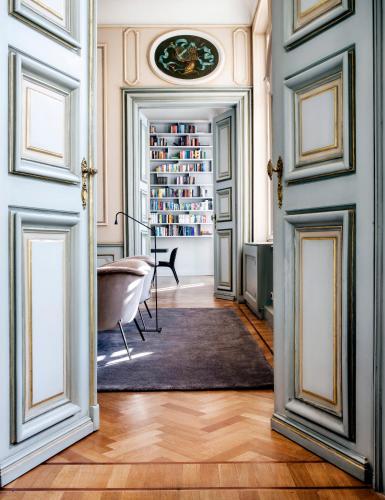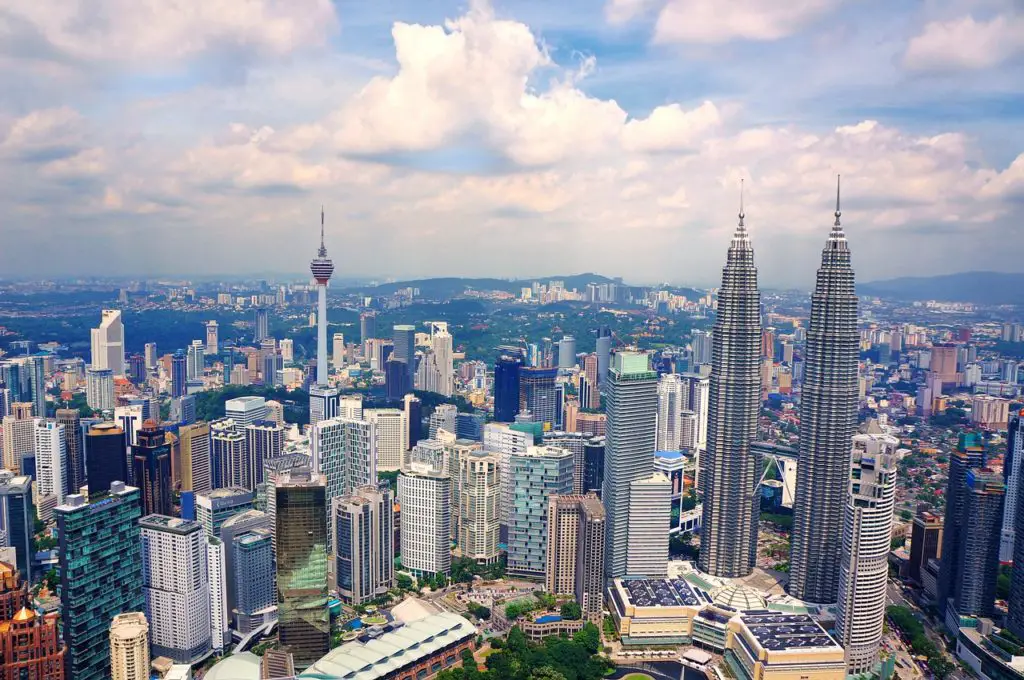Often overlooked by Brussels and Antwerp, Ghent is a quiet city that is perfect for a day trip. From its rich history to its young and modern vibes, 1 day in Ghent is enough to visit the highlights this medieval city has to offer.
Did you know that Ghentians are known as “stroppendragers”?
“Stroppendragers” or noose-bearers are a symbolic resistance of the Ghentians against tyranny and misplaced authority. During the annual festivity, the emperor is booed while the noose-bearers are applauded.
Our trip highlights include
- Gravensteen
- Patershol
- Graffiti Street
- Saint Nicholas’ Church
- Saint Bavo’s Cathedral
- Graslei
And if you have time, why not take a day trip to Antwerp and explore the historic and architectural landmarks of the city?
Disclaimer: Some of the links here are my affiliate links and I may earn if you click on them, at no extra cost. Please read my Disclaimer Policy for more information. I hope you find the information here helpful! Thank you!
Where is Ghent?
Ghent is the third largest city in Belgium after Brussels and Antwerp. The city is the historic capital of the East Flanders province. What makes Ghent unique is that it is home to stunning architecture, museums, and home to the most stolen painting in the world.
While the city has a large metropolitan vibe, this student city has a car-free historic city center. The city successfully combines tourism with sustainability with over 248 miles of bicycle paths.
With a marine climate, Ghent’s summers are mild and warm while its winters are long, windy, and cold. July is the warmest and sunniest month while August is the wettest month. February is the coldest month while April is the driest month.
History
While archaeological evidence shows that there was a prehistoric settlement on the confluence of the Scheldt and Lys rivers, Ghent was officially founded by Saint Amand who founded St Peter’s and St Bavo’s Abbey around 650 AD.
The city flourished and was plundered by the Vikings. By the 11th century, Ghent was already a city-state and by the 13th century, the city was one of the largest cities in Europe after Paris.
Ghent suffered devastation during the Eighty Years’ War during the 16th and 17th centuries. By the 18th and 19th centuries, Ghent’s textile industry flourished and the first trade unions associations appeared.
Today, Ghent is one of the liveliest cities in Europe. Ghent is a city where you will need more than 1 day in Ghent. A city that is welcoming as it is cozy. From museums to parks to shopping, Ghent is a city for everyone that comes to visit.
Visa Requirements
As Belgium is part of the European Union, EU citizens have the right of entry and residence for a short-term stay of 3 months. They would need to present their national identification or passport.
European Union citizens who are in Belgium for less than 3 months would need to report their presence to the municipal authority within 10 working days after their arrival.
Citizens from Bhutan, China, Chile, Russia, and Yemen require a visa before arrival. Citizens from Australia, American Samoa, the United States of America, Canada, New Zealand, and South Korea have to apply for the Electronic System for Travel Authorization for Visa-Waiver countries.
To determine if you require a visa to enter Belgium, click the link below.
Related posts:
Is 1 day in Ghent enough?
Yes, 1 day in Ghent is enough to visit the highlights of the city for a first-time visitor. A plus point is that these highlights are walkable and can be completed in a day. The fact that the city center is small and pedestrian-friendly makes the walk an enjoyable one.
Gravensteen Castle
The first of our 1 day in Ghent is Gravensteen Castle or Castle of the Counts. The castle sits at the conjunction of the two branches of the Lys River and was originally built with wood. It was fortified as a protective citadel and rebuilt in stone.
The unique feature of this castle is that it is the only castle with a moat and an intact defense system. Look out for the inscription above the castle entrance that stated that Count Philip built the castle in 1180 as a show of wealth and power.
Explore the torture chambers with various torture equipment used. Walk through the keep which goes back to the Roman occupation of Ghent. The living quarters built entirely of stone with 24 towers were a symbol of the Count’s power in Ghent’s history.
Who lived in Gravensteen Castle?
The Counts of Flanders lived in Gravensteen Castle from 1180 to 1353 with Philip of Alsace being the first to live in the castle. The last count to live was Louis of Male who moved his residence to Hof ten Walle.
How much does it cost to go to Gravensteen?
The cost to go to Gravensteen varies based on the age group. Children below the age of 12 years enter for free while those between 13 to 18 years cost €2 ($2). Adults above 19 years enter at a rate of €12 ($12).
The reduced rate is €7 ($7) while groups with more than 15 persons enter a rate of €10 ($10) per person. Finally, residents of Ghent enter at a rate of €7 ($7) per person.
Patershol
The second of our 1 day in Ghent is Patershol. This beautiful alley is an easy 3-minute walk as it is about 290 meters from Gravensteen Castle. These cobblestone paths and narrow alleyways dating back to the Middle Ages.
Patershol is the culinary heart of Ghent. From sushi to Turkish tea, you can have them all here. After eating to your heart’s content, visit the House of Alijn to discover the traditions and customs of Ghent.
The streets of Patershol are as authentic as they can be. Watch as people go about their daily lives while children play in the street. A visit to Patershol not only takes you back in time and gives you a glimpse of a street that is more than a tourist hotspot.
Graffiti Alley
The third of our 1 day in Ghent is Graffiti Alley. The alley is named Werregarentstraat where local artists can paint on these walls. As these walls are an open canvas, you will find that the art here is everchanging.
Interestingly, the reason the authorities allowed this street was to honor street artists and hoped that by allowing graffiti on one street, it would stop random acts of graffiti on other alleyways.
Now, did the experiment work?
Yes, it did. Not only is there less graffiti on other streets, but Graffiti Alley is also now an Instagrammable spot that attracts tourists from all over the world.
Saint Nicholas’ Church
The fourth of our 1 day in Ghent is Saint Nicholas’ Church. This church is one of the oldest and most iconic landmarks in Ghent. It is about 500 meters or an easy 6-minute walk from Graffiti Alley.
This church is a must-see and is part of the Three Towers of Ghent’s medieval skyline with the other two being Saint Bavo’s Cathedral and Belfry of Ghent. The unique feature is that it is made of Tournai blue-gray stone in Scheldt Gothic style.
The church was built on the site of an old Roman church and gradually deteriorated throughout the centuries. The central tower once carried the town bells and acted as an observation post until the Belfry of Ghent was built.
Saint Bavo’s Cathedral
The fifth of our 1 day in Ghent is Saint Bavo’s Cathedral or Sint-Baafs Cathedral. This cathedral is about 250 meters or a quick 3-minute walk from Saint Nicholas’ Church. The cathedral is known as the home of the Ghent Altarpiece.
The church was once a wooden building consecrated by Transmarus, the Bishop of Tournai and Noyon in 942 to Saint John the Baptist. The current structure was built during the 13th century.
The Ghent Altarpiece or the Adoration of the Mystic Lamb as it is officially known is the highlight of a visit here. This painting is considered one of Belgium’s masterpieces and an essential early Northern Renaissance artwork.
Who is the patron saint of Saint Bavo’s Cathedral?
The patron saint of Saint Bavo’s Cathedral is Bavo of Ghent, a soldier who became a monk. He is depicted with a sword and a falcon and is also the patron saint for falconry.
How much does it cost to go to Saint Bavo’s Cathedral?
While entry to the church is free, entrance tickets are required to view the Ghent Altarpiece. The standard Augmented Reality and Ghent Altarpiece Tour are priced at €16 for adults. The options are for 40 minutes or 60 minutes. A tour for the whole family is only 40 minutes and costs €16 for adults and €8 for children below the age of 12 years.
Graslei and Korenlei
The sixth and last of our 1 day in Ghent is Graslei and Korenlei. Graslei is 500 meters or a 6-minute walk from Saint Bavo’s Cathedral. This quay is within the historic city center and is on the right bank of the Leie River.
The houses on the banks, although heavily modified and restored, date back to the Middle Ages. To truly experience Graslei, while your time away sipping coffee at the cafes along the canal.
Walk on the Grasbrug, the lovely bridge that is the pride of Ghent. Look out for the pair of swans swimming in opposite directions at the Ghent Marriott Hotel which was once the De Swaene mansion in the 15th century.
Day Trip: Antwerp
Antwerp is one of the largest cities in Belgium about 45 minutes from Ghent. The city is on the banks of the Scheldt River with the Port of Antwerp being the biggest in the world and the second largest in Europe.
The city is also an international diamond hub where about 85% of the world’s diamonds pass through its Diamond District. Antwerp has an oceanic climate with warm summers and cool winters and light rain throughout the year.
Grote Markt
The first in our 1 day in Antwerp is the Grote Markt or the Great Market Square. This square is filled with beautiful guild halls with a stunning facades. Most of these buildings have been reconstructed during the 19th and early 20th centuries while ensuring the original design remained intact.
Look out for the Brabo fountain at the center of the historic square. This fountain shows the young hero, Silvius Brabo cutting off a giant’s hand and flinging it into the river.
This statue is based on the local folklore where there was once a giant who lived on the Scheldt River. He collected tolls from the passing boatmen and those who refused to pay, had their hands cut off. Silvius Brabo eventually killed the giant and symbolically threw his hand into the river.
Antwerp Port House
The second of our 1 day in Antwerp is the Port Authority of Antwerp-Bruges or Havenhuis. This building is a 7-minute drive from the Grote Markt. The building is unique in that the design incorporates an existing historic fire station with a modern superstructure.
This is the place where you can see both old and new structures one on top of the other where Antwerp’s Port Authority past and future meet. A tour of the building costs €10 ($10) per person.
Museum Aan De Stroom
The third and last of our 1 day in Antwerp is the Museum aan de Stroom or the Museum by the Stream (MAS). This museum is a 5-minute drive from the Antwerp Port House. It is the largest museum in Antwerp and is made from red Indian sandstone and curved glass panels.
The museum has an impressive collection of over 500,000 pieces with both temporary and permanent exhibitions. The Visible Storage Exhibition gives a glimpse of the city, its port, and the people behind the objects on display.
Head to the 10th floor for a panoramic view of the city or have a picnic on its rooftop. The ticket prices for the permanent exhibition is €10 for adults and a discounted rate of €6 for visitors between the ages of 18 to 25 years.
The ticket price for the permanent and temporary exhibition is €12 for adults and a discounted rate of €8 for those between 18 to 25 years old. With the ticket in hand, you can explore the Visible Storage, the Boulevard, and the rooftop.
What are the best places to stay in Ghent?
In our opinion, the best places to stay in Ghent are the historic city center, Patershol, and Graslei areas. We have chosen these hotels which are strategically located to give you the best of Ghent.
1898 The Post

Our first choice for a 1 day in Ghent is 1898 The Post which is a 37-room boutique hotel that was once a post office. The hotel is ideally located next to Leie river with Graslei at one end and St Nicholas Church at the other end.
What we loved is that the rooms are named according to their size, maintaining the legacy of the building as a post office. The Stamp rooms are the smallest while the larger rooms are the Envelope and Letter rooms.
The largest room is the Loft which comes with a large living area, linen sofa, and armchairs with a view of St Nicholas Church and the Korenmarkt Square below. Guests loved how the hotel beautifully merged old-world charm with modern amenities.
Other reviews mention the excellent location, the elegant and historical charm of the hotel, and the trendy and fun cocktail bar. Guests also loved the friendly and amazing staff, the exceptional customer service, and the delicious breakfast.
Novotel Gent Centrum

Our second choice for a 1 day in Ghent is Novotel Gent Centrum, a 117-room within the historical city center of Ghent. What we loved about this hotel is that it is within walking distance to the 3 must-visits of Ghent, the Belfry, Saint Nicholas, and Saint Bavo.
The rooms are spacious in contemporary design with blackout curtains, an in-room safe, a hairdryer, and ironing facilities. Guests loved the excellent location, the comfortable bed, the pleasant staff, and the good WiFi throughout the hotel.
Ganda Rooms & Suites

Our third choice for a 1 day in Ghent is Ganda Rooms & Suites which is an 8-room boutique hotel set in an 18th-century townhouse within the historic city center of Ghent. All rooms are spacious with high ceilings, and antique wooden truss with some rooms having a chimney.
Guests loved that the owners were pleasant and amazing as well as the large windows and high ceilings. Other reviews mention the delicious breakfast and the central location of the hotel. The terrace and patio add to the relaxed vibe of the hotel.
Pillows Grand Boutique Hotel Reylof

Our fourth choice for a 1 day in Ghent is Pillows Grand Boutique Hotel Reylof which is a 156-room grand hotel that was once the residence of poet Baron Olivier de Reylof. The historic building is a Louis XIV-style mansion just outside the boundaries of the medieval city walls.
All rooms have parquet flooring with warm tones that are light and airy with floor-to-ceiling windows, a Nespresso machine, walk-in rain showers, and soundproof rooms. Some rooms come with terraces and balconies while the Reylof Suite has a separate seating area.
Guests loved the knowledgeable and helpful reception staff, the lovely pool area, the well-appointed and clean rooms, and the excellent restaurant and bistro. Other reviews mention the excellent location and the top-notch facilities provided by the hotel.
De Waterzooi Lodge

Our fifth and last choice for a 1 day in Ghent is De Waterzooi Lodge which is a 3-room building that dates back to 1737 and has been lovingly restored and refurbished by its owners, Kay and Christian.
Guests loved the friendly owners, and the excellent location which was within walking distance to Gravensteen Castle, the House of Alijn, and St Michael’s bridge. Guests also loved that the trams stop right in front of the door and the beautifully furnished rooms.
Frequently Asked Questions on Ghent
Ghent is known as the capital and largest city in the East Flanders Province. It is also known for its large public squares and marketplace and medieval architectural beauty as its churches and buildings date back to the 12th century.
Yes, the people of Ghent speak English although Dutch and French are the official languages of Belgium. However, having basic knowledge of Dutch, French, or Flemish would be appreciated.
Yes, Ghent is a walkable city. The major attractions in its historical core are within minutes from each other. You can use our guide as a free walking tour or join the Private Historical Highlights Walking Tour or the Ghent Guided Walking Tour.
Alternatively, you can join the Guided Urban Bike Tour which takes you to the hidden spots the city has to offer. Semi-professional mountain bikes are provided to ensure you are comfortable during your urban adventure.
Yes, you can drink tap water in Ghent although there is a misconception that tap water is unhealthy and does not taste nice. Due to this misconception, people rather spend on bottled water rather than drink from the tap.
Yes, Uber is available in Ghent with the launch of Uber Taxi. This means that all taxis can now be booked through Uber. For consumers, this means reduced waiting times and gives more opportunities for drivers.
Yes, Gent and Ghent are the same. While Ghent is the common English spelling, Gent is the traditional Dutch spelling. Gand is the French spelling for Ghent. Historically, the name Ghent is derived from the old Celtic word “condate” which translates to the confluence of two rivers.
Yes, absolutely! Ghent is not only Europe’s most beautiful destination, but it is also its most charming.
While Brussels is known for its gastronomic delights, Antwerp for its cosmopolitan vibes, and Bruges for its quiet canals, Ghent combines all of this into a hip city that exudes historical charm.
We loved Ghent simply because:
1) Ancient medieval architecture. The medieval architecture of this city is well-preserved and intact. With its historical city center being car-free, you can walk and visit the three major sites, even if you only have 1 day in Ghent.
2) Most stolen art. Yes, the most stolen art piece is in St Bavo’s Cathedral in Ghent. The Adoration of the Mystic Lamb or the Ghent Altarpiece is the first major oil painting that marked the transition from Middle Ages to Renaissance Art.
3) Quiet Canals. The Ghent canals are the perfect place to unwind after a long day of sightseeing. Sit back and sip your Belgian beer as you watch the boats passing by. These canals are easy to walk around and are full of shops, bars, and cafes.
4) Veggie Capital of the World. Yes, you read that right. Every Thursday is “Thursday Veggieday” in Ghent where companies and restaurants make an effort to ban meat on the menu.
5) Street Art. Graffiti Street is a street artist galore as Ghent legalized street art at Werregarentstraat. The walls on this street are everchanging as artists showcase their work. This street is now one of the most Instagrammable spots in Ghent.
Unlike Brussels, Bruges, and Antwerp, Ghent is very much a hidden gem in Belgium. This means that there aren’t many crowds to deal with. So, yes, Ghent is worth visiting, even if it is just for 1 day in Ghent.




